Apple Leads on Amazon Fires: Was That So Difficult?


A spike in intentionally set fires in the Amazon rainforest of Brazil has provoked an international response from government leaders due to the devastating impact these fires could have on the world’s climate – and now, the corporate community has also begun to speak up. That’s significant because of the somewhat fraught political landscape surrounding the Amazon fires: Brazil’s President, Jair Bolsonaro, is widely viewed as a close ally of U.S. President Donald Trump, who continues to deny that global warming is rooted in human activity.
Tim Cook pledges Apple action on the Amazon fires
Apple CEO Tim Cook was among the first, if not the first, leading executive to pledge funds to help fight the Amazon fires.
Though Bolsonaro has been accused of enabling the unusual number of intentionally set fires in the Amazon, Cook did not address the politics underlying the emergency. In fact, he avoided focusing attention on Brazil altogether — an accurate take, considering that Brazil encompasses most, but not all, of the Amazon.
Instead, he focused on preserving biodiversity, stating on his personal Twitter account earlier this week that it is “devastating to see the fires and destruction ravaging the Amazon rainforest, one of the world’s most important ecosystems,” and that “Apple will be donating to help preserve its biodiversity and restore the Amazon’s indispensable forest across Latin America.”
With this statement, Cook deployed a strategy similar to that employed by other companies that have pushed back against harmful or unethical government policies here in the U.S., by focusing attention on areas of strong social consensus rather than criticizing individuals in power.
The value of corporate giving
As of this writing, the media spotlight has not been shining on other global companies pledging to help fight the Amazon fires. Nevertheless, nonprofit organizations are already laying the groundwork for additional corporate action.
Leonardo DiCaprio’s latest environmental project, Earth Alliance, is a case in point. The organization launched on July 2 with co-founder and social justice advocate Laurene Powell Jobs with a focus on supporting and preserving biodiversity. As the widow of Apple’s iconic founder Steve Jobs, she may have inspired Tim Cook to take up a vanguard position on the Amazon wildfires, but her potential for influence through Earth Alliance goes well beyond a single company.
Earth Alliance is a powerful next step for the existing Leonardo DiCaprio Foundation, in partnership with Jobs’s Emerson Collective and Global Wildlife Conservation. In addition to his work with Jobs, DiCaprio sits on the boards of several environmental organizations that partner with leading global companies, including World Wildlife Fund and the Natural Resources Defense Council.
Earth Alliance has already set a high bar by pledging $5 million toward the effort to fight Amazon wildfires.
In comparison, the G7 countries have collectively pledged $20 million. Britain and Canada have also separately pledged $12 million and $11 million, respectively.
A call to action for leading partners
Whether or not they seek media attention, other leading companies have also been drawn into the Amazon fires though their affiliation with the Rainforest Alliance.
Rainforest Alliance works with global companies on eliminating forest destruction in their supply chains through the Accountability Framework Initiative among other activities.
The organization has taken a slightly more confrontational approach toward the Amazon fires, though it refrains from criticizing Bolsonaro directly. Its website features this call to action:
“Following a staggering increase in fires this year, with flames and smoke captured on both NASA and NOAA satellites from space, it's clear the world must stand together to stop ongoing threats to the Amazon, which is vital to the world’s climate stability.”
Rainforest Alliance also states that “we are mobilizing our broad network of partners to fight the ongoing destruction of this precious ecosystem.”
That network currently includes leading corporations like P&G and L’Oreal, along with thousands of other companies that are currently participating in the organization’s certification process.
When a climate crisis becomes a bottom-line crisis, too
Though few multinational CEOs have followed Tim Cook’s lead so far, the Amazon fires may well end up demonstrating that corporations are primed and ready to act on global climate threats, whether through direct donations or affiliation with nonprofits and trade organizations.
The window for action is beginning to close, however. The European Union, for one, is already threatening trade sanctions unless Bolsonaro acts aggressively to stem the fires. The Brazilian president’s refusal to accept any funding from the G7 nations puts even more pressure on the private sector to step up.
With the global economy already sliding toward recession, CEOs cannot afford to ignore the threat of another trade war – nor can their companies afford the larger risks as the world teeters from surging climate change risks to a full-blown climate crisis.
Be sure to join us this fall at 3BL Forum: Brands Taking Stands – What’s Next, at MGM National Harbor, just outside Washington, D.C., on October 29-30, 2019. One theme we’ll explore is how companies, with employees at the helm, are reinventing how they do business – whether it’s redefining their purpose, making social impact commitments or finding where to put a stake in the ground. Receive a 25 percent discount using this code PUNDIT2019AUGUST when you register here during the month of August, 2019.
Image credit: Birgit Lengert/Unsplash
The Wayfair Effect Meets a Brick Wall at Palantir


Employees at the home furnishings company Wayfair raised the bar on employee activism when they staged a walkout in downtown Boston earlier this summer. That poses a challenge for workers at other companies, who have relied on petitions and open letters to lobby for change. A case in point is the big data firm Palantir.
Palantir in hot water over ICE contracts
Palantir is not a household name on the order of Wayfair and other consumer brands. However, since its founding in 2003 the company has established a solid record within the law enforcement and national security communities.
Palantir initially made its reputation by deploying data mining and analytic software to thwart drug cartels, terrorists, and bank fraud. More recently, though, the company’s reported involvement in racial profiling by domestic law enforcement has made it the target of privacy and civil liberties advocates.
The tipping point for Palantir employees is the company’s operational role in supporting the Trump administration’s treatment of immigrants, including mass deportations and its notorious family separation policy, through contracts with Immigration and Customs Enforcement, or ICE.
The Washington Post and Business Insider, among others, have reported that Palantir employees confronted CEO Alex Karp during an internal meeting to protest the ICE contract. Palantir employees have also circulated at least two petitions arguing against the company’s business with ICE.
The most recent petition, reportedly signed by more than 60 employees earlier this month, asks Palantir to assign the profits from its ICE contracts to charity.
Why Palantir probably won’t budge
The idea of a charitable giving solution seems like a dose of weakly brewed tea considering the human suffering at stake, but it may have been inspired by the partial success of the Wayfair walkout.
Plans for the walkout took shape after top executives brushed off an employee petition that expressed concern over the mistreatment of children in an immigrant detention center, for which the company had a contract to supply $200,000 worth of mattresses. The letter asked Wayfair to donate the profits to the immigrant legal services organization RAICES.
After the walkout, it seems that Wayfair executives took the request to heart. In an apparent compromise, the company pledged a $100,000 donation to the American Red Cross.
The donation exceeded the reported $86,000 in profits from the mattress contract, though the employee group has pointed out that donating to the Red Cross is not nearly as impactful as funding for RAICES would have been.
Nevertheless, Wayfair’s gesture appears to have had its desired effect. Calls for a boycott of the company drifted out of the media spotlight shortly after the walkout.
The charitable giving solution, though, hardly seems likely for Palantir.
That’s partly due to the scale of Palantir’s work with ICE. Its current contract dwarfs Wayfair’s mattresses, and on August 20 news surfaced that Palantir has entered into a new contract with ICE.
According to documents posted online by the General Services Administration and spotted by Mother Jones, the first year of the contract reportedly starts in September 2019 and is worth $16 million. With the potential for renewal options over the next two years, the total could come to about $49 million.
Corporate culture and Palantir
Given the scale of the ICE contract, it’s no surprise that Palantir has so far refused to accommodate the concerns of its employees.
Aside from the money involved, Palantir employees also face the additional challenge of the company’s corporate culture.
While much of the media attention has focused on the contradiction between CEO Alex Karp’s self-described socialism and Palantir’s business model, there is a superseding dynamic at work.
Palantir’s work with ICE may conflict with the worldview of its CEO, but it is almost perfectly aligned with that of its co-founder and investor, Peter Thiel, who has also served on the company’s board of directors.
Thiel has become a person of media interest in his unique role as Silicon Valley’s most visibly public, and instrumental, supporter of Donald Trump’s successful 2016 campaign. Regardless of the racist rhetoric, the choice to support the Trump campaign was of a piece with Thiel’s considerable financial support for the candidacy of Ron Paul, and his support for the anti-immigrant organization Numbers, USA.
In addition to financial contributions to the Trump campaign, Thiel stood as a California delegate for Trump during the primary cycle, delivered a keynote speech at the Republican National Convention and placed op-eds at key junctures during the campaign He also quashed a potentially influential media critic by funding a successful lawsuit against the news organization Gawker Media, which was spearheaded by Trump attorney Charles Harder.
Despite the 2017 “Muslim ban” that marked the beginning of Trump’s term in office, Thiel has remained in an advisory capacity to the administration, and was among the very first to donate to Trump’s 2020 reelection campaign.
Preparing for re-election
In the latest illustration of his behind-the-scenes role in formulating White House policy, on August 2 Thiel placed an op-ed in the New York Times excoriating Google for its work in China and all but accusing it of treason. The President followed up with a series of tweets on August 6, in which he supported and amplified Thiel’s article, and pledged that the White House will “take a look” at his accusations against Google.
In the context of corporate culture, Thiel’s op-ed also aimed at a company that is rooted in purposeful dissent, so much so that Google employees are already taking preemptive action by publicly pledging not to work on a potential contract with Customs and Border Patrol.
That kind of employee action would most likely not be tolerated at Palantir, especially not in the runup to the 2020 election cycle. As noted by Tech Crunch and others, Thiel and the President appear to be building a case against Google in advance of Election Day, by questioning the company’s loyalty to the U.S. and accusing it of election tampering, while positioning Palantir as a “patriotic” company.
With stakes that high, Palantir is unlikely to waver in its support for the Trump administration’s policies. Perhaps the only recourse for employees who are uncomfortable with the company’s policy on ICE contracts is to walk out, never to return.
Be sure to join us this fall at 3BL Forum: Brands Taking Stands – What’s Next, at MGM National Harbor, just outside Washington, D.C., on October 29-30, 2019. One theme we’ll explore is how companies, with employees at the helm, are reinventing themselves – whether it’s redefining their purpose, making social impact commitments or finding where to put a stake in the ground. Receive a 25 percent discount using this code PUNDIT2019AUGUST when you register here during the month of August, 2019.
Image credit: Maria Oswalt/Unsplash
Context-Based Targets Bring a Scientific Approach to Water Management


In 2015, when the United Nations issued the Sustainable Development Goals (SDGs), it called on business, government and civil society to “ensure availability and sustainable management of water and sanitation for all.” But societal and environmental factors—from industrialization to climate change—may make accomplishing this goal increasingly difficult, recent research shows.
Seventeen countries, home to a quarter of the global population, now face “extremely high” water stress, withdrawing more than 80 percent of their available water supplies each year, according to an August report from the World Resources Institute (WRI). Another 44 countries withdraw around 40 percent of their annual supplies, putting them in the “high” stress category.
"Our populations and economies are growing and demanding more water, but our supply is threatened by climate change, by water waste, and by pollution," Betsy Otto, director of the WRI's Global Water Program, said in a call with reporters earlier this month, as reported by Business Insider. "Water stress, which occurs when demands rival annual supply, is a manifestation of those issues."
Companies are struggling to manage their water goals
Though the water target—known as SDG 6 or Goal 6—is just one of 17 social, environmental and economic goals that make up the SDGs, it arguably underpins every other objective on the list. We can’t live, grow food, create energy or do business without water—and as more data about water stress issues emerge, the water target is becoming top-of-mind for stakeholders pursuing the SDGs.
In the private sector, more companies are disclosing their water risk and setting reduction targets, but research indicates they still struggle to translate those ambitions at the local level: In a 2019 survey of 86 companies with revenues of at least $1 billion, 74 percent say water is an increasing priority, but nearly half (44 percent) “have no plan in place” to achieve their water goals.
Given the data we’re seeing about water stress—made starkly clear by crises such as the massive shortfall that left residents in Cape Town, South Africa, standing in line for water last year—these findings are distressing, to say the least. But researchers are developing new water management approaches they say can help companies chart the way forward.
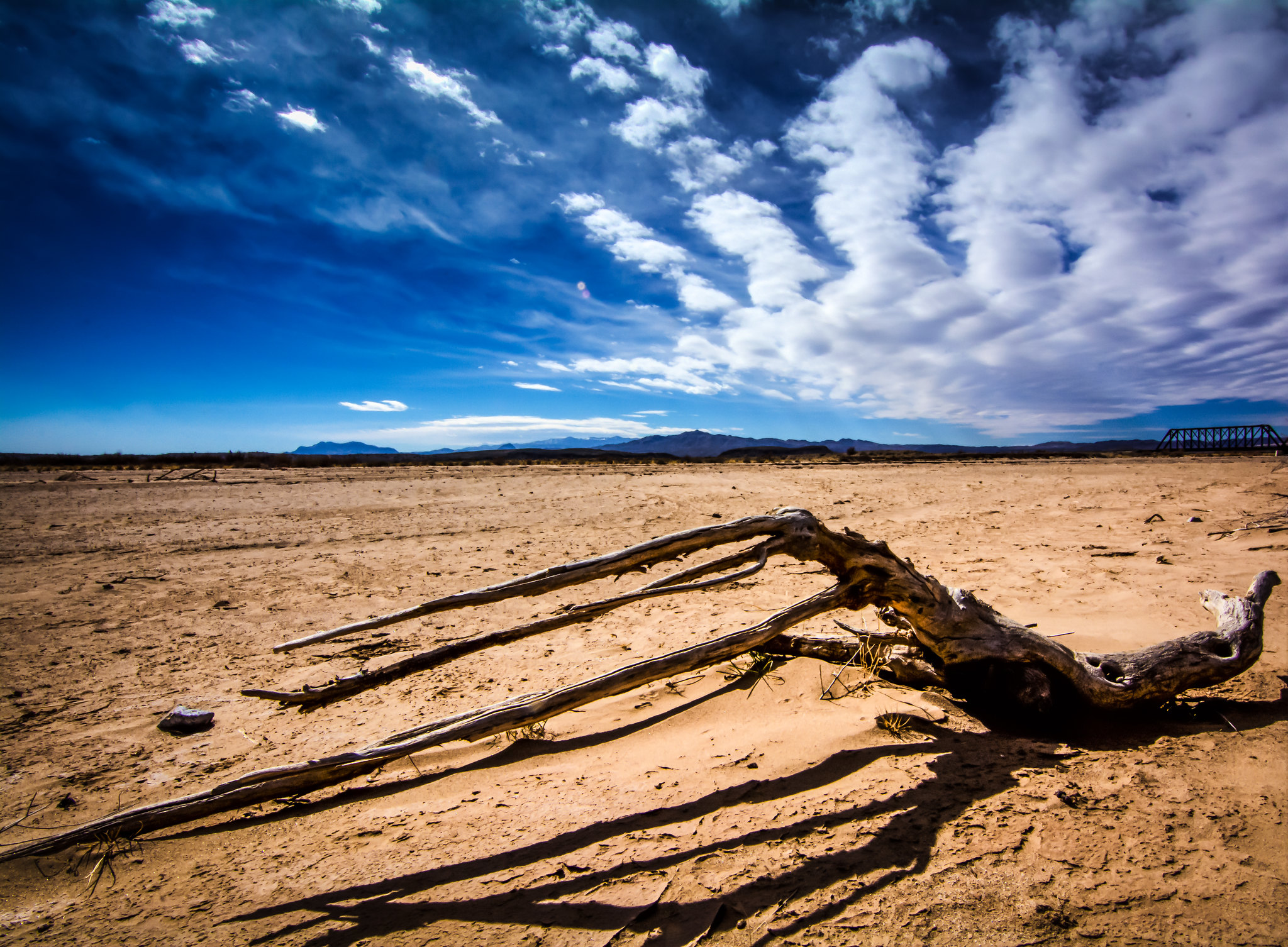 (Image: New Mexico's Rio Salado Riverbed stands dry in February 2015. The Southwestern U.S. state is one of several facing "extremely high" water risk, according to recent research from WRI.)
(Image: New Mexico's Rio Salado Riverbed stands dry in February 2015. The Southwestern U.S. state is one of several facing "extremely high" water risk, according to recent research from WRI.)
What’s science got to do with it?
When it comes to addressing climate change, a growing number of companies are looking to science to frame their approach. More than 600 companies are taking science-based climate action, and 232 have climate goals approved by the Science-Based Targets initiative (SBTi). As the name implies, science-based targets center around what researchers deem necessary to effectively tackle climate change, rather than what company leadership thinks they can accomplish—bringing ambition levels higher and pushing companies to innovate.
Researchers are increasingly calling for a similar approach for water. “Managing [the] supply-demand imbalance is the new normal for business,” Rylan Dobson, water stewardship consultant for the World Wildlife Fund (WWF) and Alexis Morgan, WWF global water stewardship lead, wrote in a recent post on Medium. “Accordingly, the underlying question when setting water targets becomes not ‘what performance efficiencies could we realistically achieve’ but ‘what level of water performance do we need to achieve’ to ensure that a business takes meaningful responsibility for ensuring that its impacts remain within the capacity of our planet.”
To that end, a group of environmental organizations—including WWF, WRI, The Nature Conservancy and CDP—are developing what they call context-based water targets: a new approach for setting corporate targets that address the needs of a given watershed or catchment area.
From local to global: Context-based water targets and watershed-wide collaboration bolsters stewardship
“The reasoning behind [the groups’] call for ‘context-based targets’ is that water issues are primarily local—each basin has unique challenges that need to be considered when managing water resources,” Morgan Gillespy, CDP’s head of water, wrote on the organization’s blog. “Corporate targets, therefore, should address these site-specific concerns, and include input from local stakeholders.”
This context-based approach to water goal-setting was recently piloted in communities such as the Santa Ana River Watershed in Southern California, where participating companies like Hilton and PepsiCo collaborated with watershed partners to align on key challenges.
Pilots such as this one have led to a renewed push for a formalized framework around context-based targets. But this type of watershed-wide collaboration is not exactly new: Water advocates have long called for more partnerships at the watershed level, arguing that even if first-movers drastically reduce their water use, a basin will remain at risk unless all major users come on board.
The Alliance for Water Stewardship (AWS), for example, has brought corporate, government and civil society partners together around water issues for over a decade. Along with driving collaboration between companies—and other partners in their watersheds—the group maintains the AWS International Water Stewardship Standard, a globally-applicable framework for major water users, which is driven by context-based factors.
“The reason the Standard was conceived in the first place was to strengthen corporate engagement beyond the fence-line, within the context of an entire catchment area or watershed,” AWS CEO Adrian Sym told TriplePundit. “The Standard is rooted in context.”
The AWS Standard is driven by feedback from its more than 120 members—including major corporates like Nestlé and Apple—and remains responsive to emerging challenges in at-risk watersheds. The second version of the Standard—which specifically ties it to the SDGs—was released in March following a two-year review period among AWS members, with more iterations to come on a regular basis.
Managing water use in complex supply chains

(Image: Sectors with complex global supply chains, such as the sports and entertainment industry, face stiff challenges when it comes to managing water use. Fortunately, first-movers like global company AEG are showing the way, with water conservation upgrades to venues such as the Staples Center in Los Angeles.)
Even with standards on the books, major global companies still face stiff challenges in understanding water use across their complex supply chains and taking steps to mitigate it. Fortunately, a number of early-movers are leading the way.
Apple, for example, has been working on its internal clean water program for more than five years and extended it to 116 suppliers, resulting in 7.6 billion gallons of water saved, in 2018. Even further, the company recently extended the AWS Standard to suppliers in China facing high water risk, moving toward a “more comprehensive and, importantly, catchment- or watershed-based approach,” Sym said.
In the sports and entertainment sector, global company AEG uses the WRI’s Aqueduct tool to identify sites in areas facing water risk—allowing the company to focus conservation and stewardship efforts where they are most needed. Sites that are in “high” or “extremely high” water risk areas are subject to AEG’s 2020 Environmental Goal for water conservation, which is to reduce potable water use at such sites by 4.4 percent per year—amounting to a 20 percent reduction over five years, a goal adapted from city ordinances in high-risk watersheds, according to the company.
“Our experience has shown, time and again, that the more you use water stewardship, the more you embed it in your business practices, the more transparent you are about your water use, the more value you can realize through doing more of that and deepening your engagement,” Sym said. “Companies quickly realize a lot of value they didn’t fully understand before they started their water stewardship journeys.”
The bottom line
While water management will undoubtedly remain challenging for global companies and other major water users, one thing is clear: The shift toward a scientific approach that addresses the needs of each watershed—and supports the global push for accessible water under the SDGs—is here to stay.
“Setting water targets according to scientific thresholds will become the new normal of corporate water targets out of necessity,” wrote Dobson and Morgan of WWF. “They are not a short-lived trend.”
This article series is sponsored by AEG and produced by the TriplePundit editorial team.
Image credits: Willem-Jan Huisman/Unsplash, mrjn Photography/Unsplash, mwwile/Flickr, and AEG
Why Companies Must Take Responsibility for the Amazon Fires

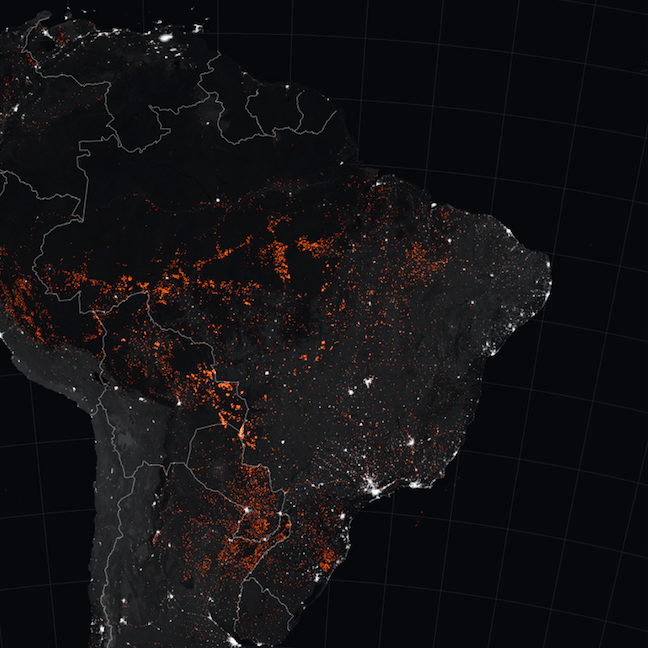
A man-made crisis is raging across one of the most important and biodiverse regions of the planet. The Amazon is burning, and due to the fact that tropical rainforests never burn naturally, the blame falls entirely on us—or, more precisely, on our demand for commodities that require land. Until global companies rethink how they manage their supply chains in Brazil, we can expect more Amazon fires in the future.
The crisis is similar to what took place back in 2015 in Indonesia. That year, an extremely strong El Niño cycle sparked historically bad fires in Indonesia, which charred 2.5 million hectares of land, created as much daily carbon emissions as the United States, and sickened millions due to dangerous haze across Southeast Asia. Then, the focus turned to the role of the palm oil and paper pulp industry, which for years had drained wetlands and cut down tropical forests, thereby contributing to the conditions that led to the fires.
In Brazil, it’s not palm oil or paper pulp, but soy and cattle that are at the center of deforestation and illegal burning in the Amazon. But there is one similarity with Indonesia: Global supply chains connect consumers and businesses in the United States, Canada and Europe with the devastation that is taking place on the ground in Brazil. Since far-right President Jair Bolsonaro took office in Brazil last year and declared the Amazon “open for business,” deforestation has risen rapidly.
“Now that the world is finally paying attention, it's important to also understand that governments and companies around the world are emboldening Bolsonaro's toxic policies when they enter trade agreements with his government or invest in agribusiness companies operating in the Amazon,” said Moira Birss, finance campaign director for the nonprofit Amazon Watch, in a press statement.
Amazon Watch has named BlackRock, the world’s largest investment firm, as a leading investor in Brazilian agribusiness. Other companies connected to illegal deforestation are Cargill, recently named the worst company in the world by the nonprofit Mighty Earth, as well as other agribusiness companies such as Archer Daniels Midland and Bunge.
There are undoubtedly more, but open information and supply chain monitoring is nearly non-existent in this area. There’s no effective transparency mechanism in the soy or cattle industries, meaning that it is difficult for outside observers to effectively trace if any product was grown in a recently cut-down forest. Even the Amazon Soy Moratorium, in which companies voluntarily agreed not to source soy from the Amazon, has been criticized as greenwashing.
“The fires in the Amazon are the result of complicated political, financial and social factors," said Henriette Walz, deforestation lead for the Rainforest Alliance, in a press statement. "We need continued collaborative effort from governments, companies and consumers to send a message.”
Indigenous people—whose land is being stolen and often burned illegally—are not standing for this anymore. A group has launched a call to boycott all companies that invade their land. While their initial focus will be on Brazilian companies directly doing illegal activities or setting fires, anyone along the entire supply chain could be fair game for a boycott. Quite simply stated, ignorance is no longer an option in 2019. The planet is literally burning, and any company that sources any products from tropical forests regions is partly to blame.
We understand the fires, and where they are burning, partly due to the massive improvement in satellite monitoring technology. Companies can—and should—know exactly where the soy, beef, palm oil, or paper pulp they use comes from, and end business relationships promptly with anyone doing any illegal activities.
While the fires might make one feel hopeless for the future of the planet, concerted action can make a difference. Remember Indonesia? It has made remarkable progress since 2015 and while fires are also burning there, it appears 2019 will end on a much better note than four years ago.
Brazil, too, could protect the Amazon, put an end to fires, and ensure the health of our planet well into the future. But with a climate denying, pro-development president at its head, it is clear that global pressure will be key – and that means holding any company, big or small, accountable for its role in enabling the destruction of the Amazon.
Image credit: NASA
Rooftop Solar in Perspective: Walmart Takes Tesla to Task


Every source of energy comes with risks and hazards. In the case of rooftop solar panels, the overall risks may be low compared to natural gas, heating oil and other electrical systems in a building. Nevertheless, such risks are a factor that needs to be addressed, as recently demonstrated by the cases of Walmart’s dealings with Tesla and the retailer's legacy SolarCity power generation systems.
How safe is rooftop solar?
Despite the media attention on Walmart and Tesla, global data demonstrate that rooftop solar fires are extremely rare. Rooftop solar technology, the standard practices and standards involved with these installations and finally, workforce training have all matured over the past decade.
A study of rooftop solar fires in Germany, for example, found that only 0.006 percent of all rooftop arrays installed in that country over a 20-year period had caught fire. Additionally, in more than half of those cases the solar system itself was not at fault.
Here in the U.S., the Department of Energy coordinates with fire fighters, SEIA (Solar Energy Industries Association) and other industry stakeholders on protocols for responding to situations involving rooftop solar panels. A substantial body of training literature has been developed, as with many other potential hazards in buildings including gas lines, oil tanks and other flammable or hazardous materials stored on site.
A high-profile fight over rooftop solar panels
The safety of rooftop solar panels has contributed to their popularity, partly fueled by Walmart as well as Target, Amazon and many other leading U.S. companies.
These big solar purchasers have played a critical role in the growth of the U.S. solar industry. They have helped to accelerate economies of scale, support new financial tools, promote public awareness and build the solar workforce. All of this activity leads to lower costs for all solar buyers.
Tesla has also played an instrumental role in pushing the market for clean tech. Though better known for its eponymous Tesla line of electric vehicles and its highly visible CEO Elon Musk, in 2016 the company also invested heavily in rooftop solar through its acquisition of the leading developer SolarCity.
That vanguard status, though, attracts the media spotlight when things go wrong.
On August 20, Walmart attracted a flurry of media attention when it took Tesla to court over work performed by Tesla’s SolarCity arm on a rooftop photovoltaic (PV) contract involving approximately 244 Walmart stores.
According to a timeline published by Reuters, the contract covered work performed between 2010 and 2016.
Between 2017 and 2018, solar panels installed under the terms of that contract caught fire at seven Walmart stores. Joint inspections by the company and Tesla at other stores revealed potential fire hazards, including solar panel “hotspots,” at other locations.
By the spring of 2018, Tesla disconnected all of the rooftop solar systems — a prudent decision, considering the results of the inspections. In the court filing, Walmart states that Tesla ultimately provided it with 29 inspection reports covering 157 items requiring action.
Of the actionable items, 48 included issues with wiring, grounding and broken solar panels with hotspots, as reported by media outlets including Reuters.
In another twist involving new technology, Walmart attributes part of the installation shortcomings with Tesla's reliance on drones. According to Walmart, the drone inspections “lacked sufficient resolution to find panel ‘hotspots.’”
Walmart wants its day in court
There have been some additional twists and turns in the case, but the upshot is that Walmart was not satisfied with Tesla’s plans to remediate the situation.
That brings the state of affairs up to August 20, when Walmart filed a lawsuit in New York State Supreme Court, accusing Tesla of a “cavalier” response to the fire hazards and charging that the company is “incapable of providing maintenance and inspection services sufficient to ensure the safety of Walmart’s customers, employees and property.”
CNBC has additional details related to alleged flaws in SolarCity’s business model, inherited by Tesla, that may have contributed to the installation problems. An August 21 column in the Los Angeles Times also calls attention to the ripple effect of the SolarCity acquisition on Tesla’s brand reputation.
Working out the rooftop solar panel problems
Apparently, the legal activity caught the attention of decision-makers at Tesla. As of this writing, the two companies have publicly pledged to work on the solar panel problems together, with the goal of reconnecting all of Walmart’s solar arrays after “all parties are certain that all concerns have been addressed.”
The statement also reaffirms a broader goal that the two companies have in common, concluding that “we look forward to pursuing our mutual goal of a sustainable energy future.”
Meanwhile, though, Walmart’s lawsuit is still on file and new troubles may be on the horizon. Last week, Amazon, another leading solar adopter, said that one of its SolarCity rooftop arrays caught fire last year.
Lessons learned: more data on rooftop solar panels needed
One good thing to emerge from this public fight is the need to collect national data on fires involving rooftop solar panels.
Though other countries like Germany keep close tabs on solar panel risks and hazards, here in the U.S. fires involving rooftop solar panels may be counted in other categories, including electrical systems and appliances.
Meanwhile, the fight between Walmart and Tesla is unlikely to stall the demand for rooftop solar across the U.S.
Despite a lack of action on the part of federal lawmakers, strong state-level renewable energy policies, corporate demand, and new cost-cutting tools will continue to propel the U.S. solar market while the two corporate behemoths settle their differences.
Image credit: Walmart/Flickr
Why Water Could Cancel Your Burger Order Before Climate Change Does
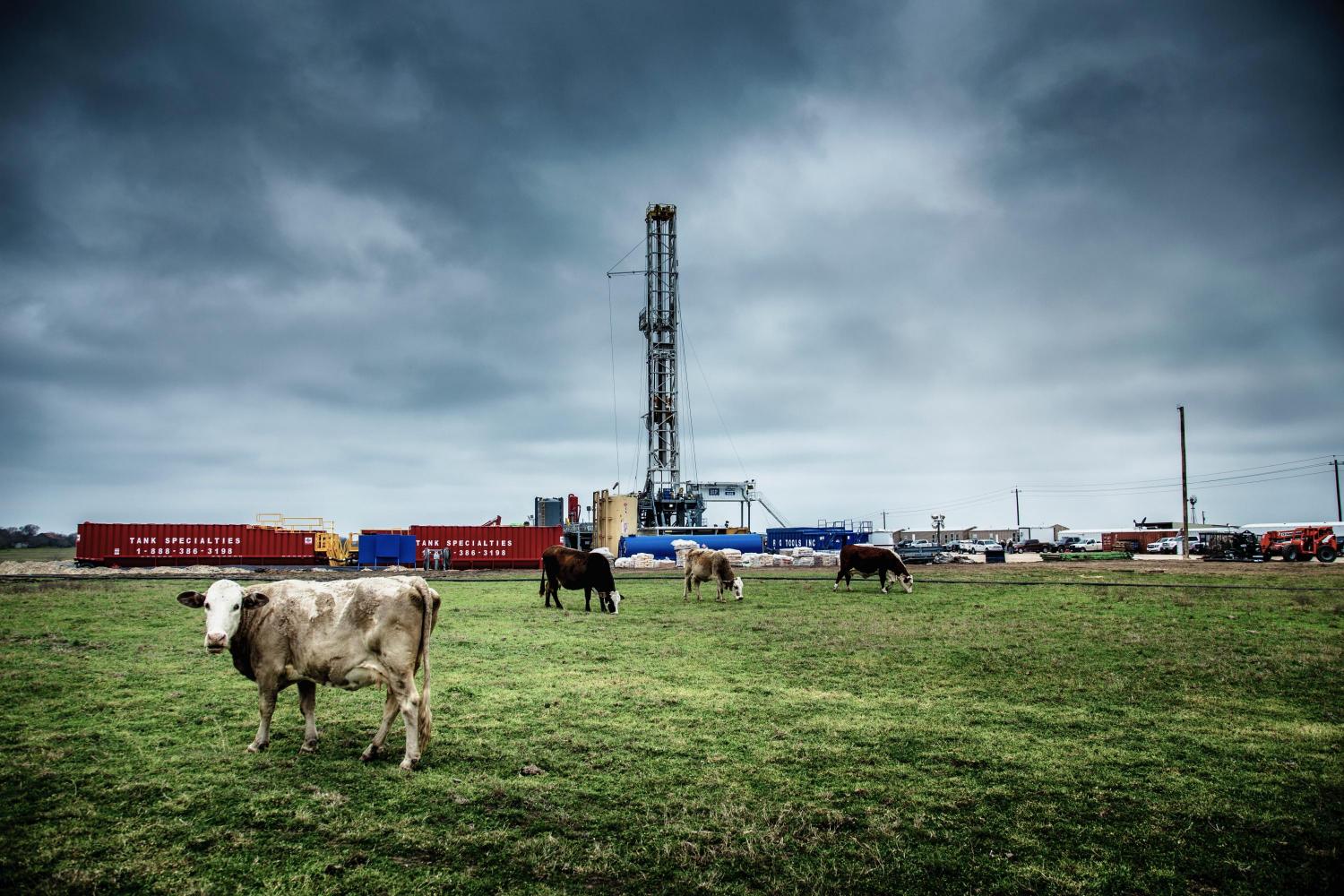
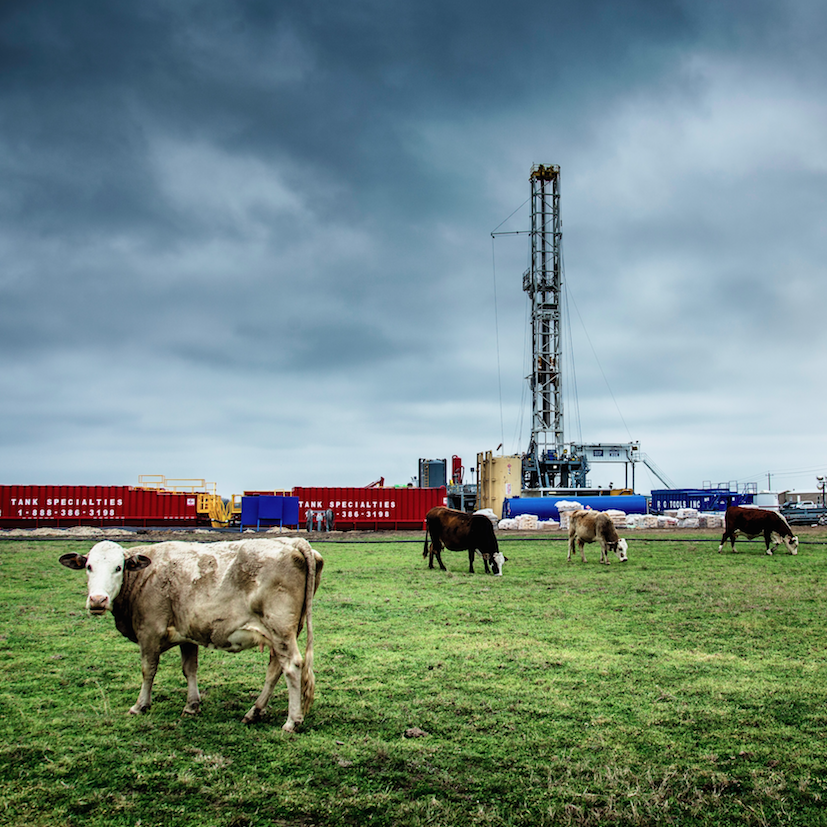
The latest IPCC report says one of the ways humans can help slow the march of climate change is by changing the way we eat, notably by reducing our consumption of meat. Beef production, in particular, is a major contributor to greenhouse gas emissions. In fact, globally, livestock are responsible for 14.5 percent of all anthropogenic greenhouse gas emissions, and of that, 65 percent come from beef production. The United States comes in fourth in beef consumption worldwide, so there is plenty of room for reduction.
From an emissions standpoint, reducing beef consumption makes a lot of sense. But what does that mean for the ranchers producing that beef and the workers who process it? While ranchers in some countries responded to the findings with evidence of how they are addressing emissions, Texas ranchers have sung a different tune, pushing back on the findings. That matters because the U.S. is the largest beef producer in the world, and Texas has more cattle than any other state; 13 percent of American cattle live there. This also matters because, as a state, Texas has its head in the sand about climate change, even though its effects are already apparent. One major effect of climate change in Texas: Increasing water stress.
The challenge: Scoring ranchers' buy-in on climate change
Beef is a very water-intensive industry. It takes about 1,800 gallons of water to product one pound of beef. Texas has always been a boom-and-bust state when it comes to water, but the last 10 years have been particularly tough. The multi-year drought that lasted from 2010 to 2015 was the second worst in state history, nipping at the heels of the drought of record in the 1950s. The drought was broken by three years of catastrophic flooding, culminating in the devastation of Hurricane Harvey. Within a few months after the hurricane, the state was facing drought again. The cycles are getting shorter and more intense. The Lone Star State is yet again in the midst of drought, with some of the most intense spots in the prominent cattle ranching areas of west and north Texas.
2011 was the hottest, driest year of that multi-year drought, and it forced many multi-generational cattle ranchers to sell their cattle. The state saw major economic losses, including the closure of major processing plants by companies like Cargill, one of the top companies in the industry. It took an emotional toll as well as an economic one. And in 2018, ranchers were back in a similar spot, facing losses as the water ran dry.
The clock is ticking as the beef industry has little time to adapt
Ranchers have to rely on nature for their livelihood, and they have seen the changes in the climate. Coming to terms with what that means if the new normal is severely reduced water and food stocks could be a bitter pill to swallow. With external pressure to reduce meat consumption coupled with internal pressure of the rising costs, both economic and environmental, of raising cattle, the industry could reach a breaking point before much longer.
Some ranchers see an opportunity to be more innovative in exploring new water technologies, while some may opt to leave the business altogether if they continue to suffer losses year after year. It’s hard to imagine Texans, much less most Americans, giving up their brisket or burgers any time soon, but if the rains don’t come, hard decisions will have to be made by consumers and producers alike. The iconic Texas Longhorn may become a nostalgic symbol of the way life and the meat industry both used to be.
Image credit: Donald Giannatti/Unsplash
Companies Must Address the Role Gender Plays In Burnout


“I was getting panic attacks every week, in the emergency room for intense stomach pain, and I had disconnected from the very people who used to give me energy both at work and outside of work,” Paula Davis-Laack, founder and CEO of the Stress and Resilience Institute, wrote about her experience with burnout.
Burnout—a long-term state of emotional, mental and physical exhaustion brought on by repeated stress, according to Psychology Today—is now considered a medical syndrome by the World Health Organization as of June 2019.
In a 2019 Accountemps study, 96 percent of the 2,800 senior managers surveyed reported their team members experience burnout.
Burnout is not only devastating for an individual but also for companies’ morale and expenses. Those experience burnout are more likely to take a sick day or twice as likely to leave their current employer, according to Gallup research. The resulting decreased productivity and higher training costs are estimated to cost U.S. businesses $150 billion to $300 billion each year.
The upside is that more companies are addressing burnout through creating mental health days outside of paid time off. Another option is giving employees the option of working from home; for example, Impact Group, a leadership and relocation coaching consultancy, does so to encourage employees to reset. But companies truly committed to toeing the triple bottom line should consider offering more support and flexibility to its employees, especially women.
How does gender affect the experience of burnout?
While some studies, such as the 2019 Accountemps survey, do not indicate a significant difference between the burnout reported by men versus women, two recent studies indicate that men and women do experience burnout differently. A recent University of Montreal study concluded that women experience burnout more frequently than men. In addition, a University of Graz study found that while men and women experiencing burnout had the same level of depression, women showed higher levels of emotional and physical exhaustion that affected performance.
According to the University of Montreal study, reasons lie in women’s lack of autonomy due to their lower-level positions as well as obligations outside of work.
“Although evidence of a gendered effect of decision latitude on burnout is limited and equivocal, our results nevertheless support the view that larger, societal differentiation processes associated with women’s limited access to greater control opportunities in the work and non-work domains may be at play,” wrote Nancy Beauregard, study author and associate professor of industrial studies at the University of Montreal, in an email to TriplePundit.
How women can mitigate the risks of burnout while still taking on meaningful career opportunities
Even though burnout’s negative impact on women’s productivity results from larger systematic forces—think the glass ceiling and women’s domestic duties, which often include taking care of elderly family members—women can mitigate the risks of burnout. And it’s in their employers’ best interest to ensure they feel fulfilled and motivated at work, as the alternative is a disengaged workforce and higher rate of employee turnover.
“There’s nothing fancy about what it would take to turn things around,” Dr. Sheryl Ziegler, author of “Mommy Burnout," to told the Washington Post. “But it’s a huge shift in the cultural mindset. That’s the challenge.”
The acts to bring about that paradigm shift don’t need to be overarching policy changes but rather small yet impactful ones that remind women and those around them to recognize the signs of burnout in the workplace. Communication is key. Checking in about project deadlines and responsibilities outside of work with managers are great steps for women to stay above the stress.
“Women should voice their distinctive reality in terms of work-family balance, and how it impacts their productivity and wellbeing at all these levels—at home, at work and in government,” Beauregard told 3p.
How companies can prevent burnout among women employees
In addition, industry and company culture also play a role in creating an ecosystem to avoid burnout among women. When there is a poor social support structure in an industry—take journalism and medicine, for example—studies report there is more burnout among women in that industry.
But mentorship, childcare and paid parental leave are all steps companies can take to prevent burnout among women.
The University of Alabama at Birmingham Medicine is redefining the poor social support structure in medicine for women within their workforce, according to Sara Berg of the American Medical Association. It addresses burnout among all physicians, with a focus on women and underrepresented minorities, through their leadership development programming by addressing time constraints, technology, and regulations to allow for more autonomy in the doctors’ roles.
Similarly, Patagonia has created a strong social support structure through its on-site childcare center, which has been there for over 30 years, leading to almost no turnover among women employees who have children, Quartz reported.
“In nearly two decades of working with organizations, we have found very few CEOs and senior leaders who move beyond providing wellness options and benefits to truly driving cultures that value regular renewal as a critical component of performance,” wrote Tony Schwartz, the director of the Energy Project, a global consultancy all about organizational transformation, at Forbes. “Now is the time. In a world of relentless disruption, transforming the way people work may be the biggest competitive advantage of all.”
Image credit: Claudio Scott/Pixabay
Should Helicopter Personal Finance Be a Thing?


As soon as we can speak, we insist we can do it ourselves. Try telling a two-year old she can’t tie her shoes or that she’s putting the dress on upside down. Unfortunately, we don’t seem to grow out of this tendency to resist help – and that includes when it comes to personal finance.
People almost universally agree that seat belts save lives, distracted driving is a bad thing, and that flossing is important. And yet, despite awareness of the right choice and our own best intentions, a text message chime while driving is nearly irresistible while flossing our teeth is not. Carrying through on our plans requires more than motivation. Behold the action-intention gap.
For help, we often rely on others, such as government, businesses, or landlords to save us from ourselves. Legislating seat belts, turning on a text message auto-reply when driving, requiring renter’s insurance—all guardrails for decisions made in the service of our own self-control and wellbeing.
What does this have to do with personal finance? With one in five Americans not saving any money for the future and 39 percent of all Americans reporting they do not have $400 cash on hand to cover an emergency, financial institutions can do more to help us help ourselves. Whether you call it paternalism in financing, nanny bankers or helicopter banking, looking beyond the label shows that it can work to our advantage just as it has in other industries.
The proof is in the 401(k)
Consider the undeniable success of the finance industry’s most protective action yet: default enrollment in retirement plans. The shift to automatic enrollment in U.S. employer sponsored retirement programs has been enormously impactful on household savings.
A recent report estimated that about 50 percent of American companies default new employees into retirement savings, and the result is that anywhere from 80 to 90 percent of defaulted employees remain enrolled. Given the successful implementation of automatic enrollment in retirement savings, why hasn’t this approach been adopted more widely by financial institutions across budgeting, spending and other products and programs?
Paternalism in personal finance defined
Perhaps one reason is the concept of paternalism. It’s a loaded term! As a woman first and a consumer second, the idea of external restrictions can grate . . . but maybe that’s the point. My savings account doesn’t grow when I have the freedom to forget it. We have to push back against knee jerk reactions and natural tendencies to secure long-term gain.
As behavioral scientists, we define paternalism in finance as an academic term that means a deliberate decision by a bank or credit union, government agency, or an employer to design procedures and products in a way that set consumers up for both short- and long-term financial wellbeing.
This can be as basic as nudging people toward savings or away from excessive spending, helping people find new ways to earn money, or distributing income in a way that smooths cash flow. This is because financial literacy programs do not work on their own, accounting for only 0.1 percent of the variance in financial outcomes; that is, just 1 out of 1,000 students in a financial education program acts on their knowledge to improve their outcomes.
Behaviorally informed nudges can have much larger effects. In 2017, our work at the Common Cents Lab in partnership with 27 financial organizations resulted in an additional $10.5 million saved. Imagine that same type of impact delivered at scale.
Eliminating temptation, introducing safeguards
People do want to make the right financial decision. Most will say they want to save more money but stopping for takeout or getting a Lyft or taxi instead of waiting for the bus can be a more tangible and convenient reward, especially at the end of a day full of frustration and setbacks.
Our readily available account balances and access to cash can make it too easy to choose now over the future. At the same time, locking savings up in a CD or bond is too restrictive.
To help people strike this delicate balance, the Community Empowerment Fund in Durham, NC, offers a SafeSavings account that makes it easy for members to deposit money but requires a 24-hour waiting period to access funds after requesting a withdrawal. An emergency withdrawal loophole exists but requires an extra phone call.
When we asked about whom members were guarding against, one respondent replied: “From me!” Members rely on the account’s restrictions to help them rethink purchases they might want to delay while trusting that they can access the funds when they decide it’s time.
As a self-control strategy, these users have realized that the best way to resist temptation is not to grit one’s teeth and power through, but instead to prevent the opportunity for temptation in the first place.
DIY protectionism
This program punctures the myth held by many financial providers that their customers will balk at overly managed products because they restrict autonomy. In fact, it shows that people will embrace products that help limit their exposure and encourage better financial decisions by default.
In our work with banks and credit unions, we regularly witness customers using existing products in ways that limit their autonomy, like those who use the lost card feature in an app to toggle their credit cards on and off to avoid spending. We’ve also seen people design their own version of round-up and savings sweep products, as with the member who keeps his checking account at a round number by transferring all odd values into savings. Every. Single. Day. And we’ve seen people bring more tangibility to their budgets by using prepaid cards for their different spending categories.
The lesson is that people are already working hard on their own to create interventions and processes that help them save using the tools at hand. For providers, the clear message should be that better tools would be welcomed.
Image credit: Austin Distel/Unsplash
This Big Box Retailer Leads on ‘Woke Capitalism’
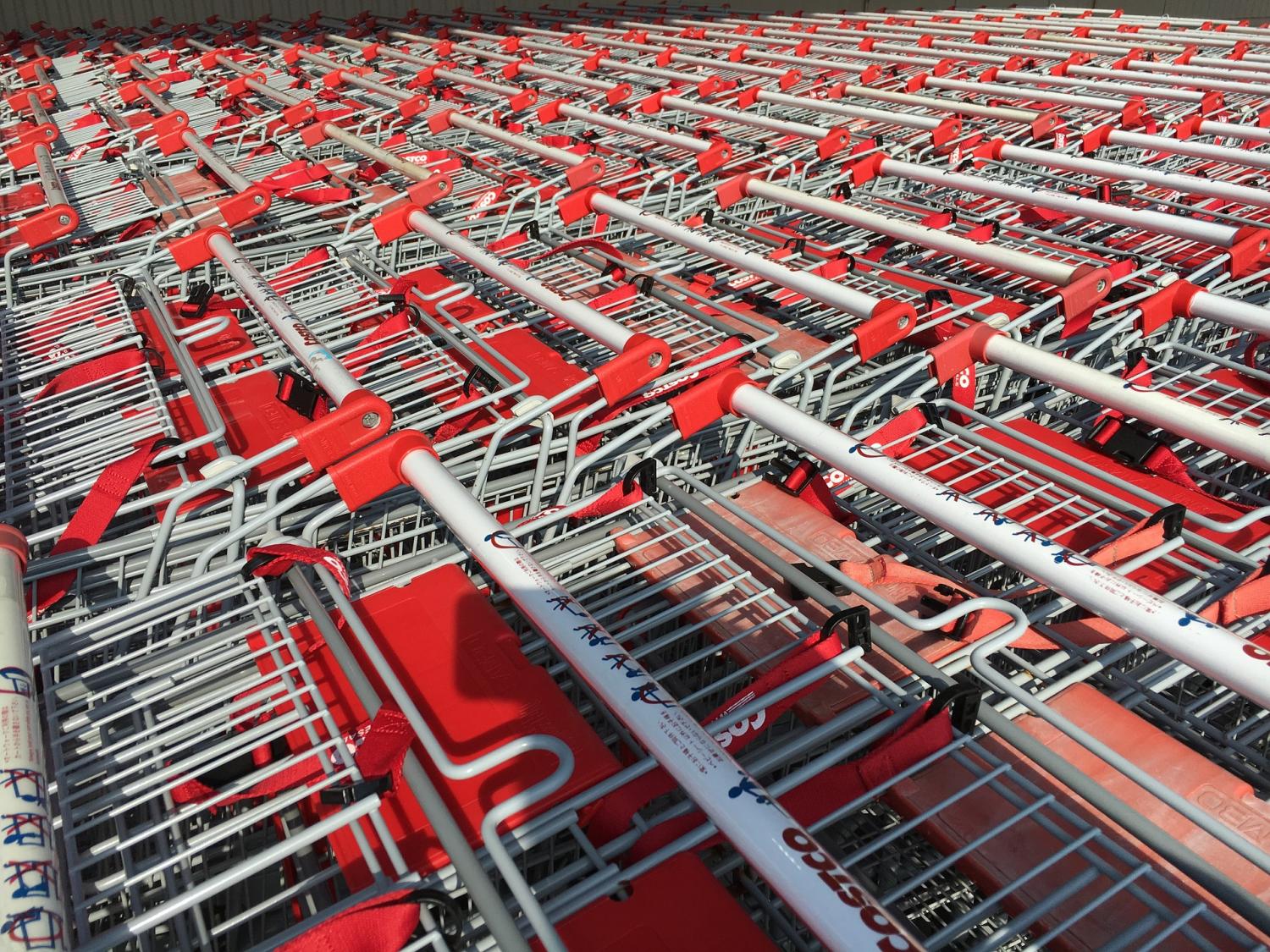
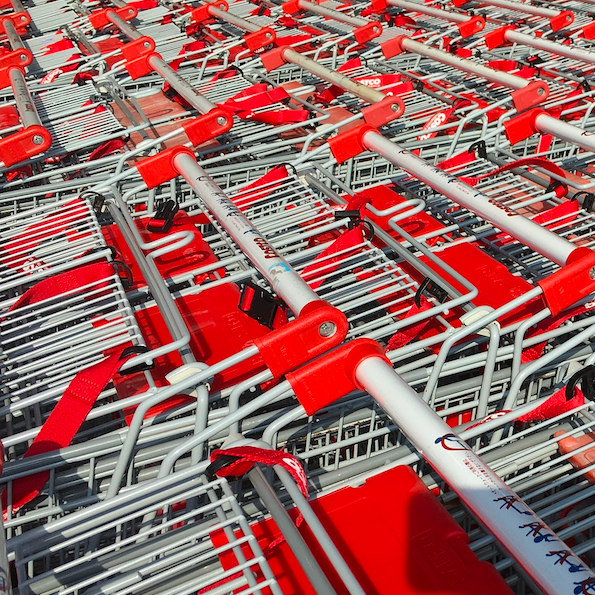
Several years ago, I wrote why Costco stands out as a corporate social responsibility leader. The article went bananas with our readers, the way the big-box retailer’s customers go bananas for everything from its well-priced bananas (and avocados, and blueberries, and mangos) to brand-name clothing and supplements. What I wrote in 2012 still rings true, as the company is still seen by observers as a living example of “woke capitalism.”
Only a few days after 181 CEOs affiliated with the Business Roundtable signed a letter agreeing that from now on executives need to think about how their companies can benefit all stakeholders, Costco has been singled out by Barron’s.
“Its CEO wasn’t a Roundtable signatory, which is ironic since Costco has been criticized by Wall Street for paying workers too much and not doing enough to maximize earnings,” wrote Barron's senior editor, Steven M. Sears. “The old complaints have subsided a bit as Costco’s stock gained some 35 percent this year, outperforming the S&P 500 index’s 17 percent [increase].”
Costco proves that conducting business like a decent corporate citizen can pay off at many levels. The company has long had a reputation as paying its workers far more than its competitors in the retail sector, with solid health care benefits as well. Its supply chain isn’t perfect, but it passes the inclusion test with its program that gives local businesses opportunities to sell their products within the chain’s warehouse stores. And customers benefit as Costco has long had a policy of passing on wholesale cost savings along to its card-carrying members (as in those Calvin Klein jeans) – a practice that has long frustrated Wall Street.
Check off all those stakeholder group boxes, and you’ve got a company that is a textbook study of woke capitalism.
“In the end, the company treats its employees and shareholders more than decently. And sales continue to trend upwards,” I wrote in 2012. “If you believe all workers should have the chance to earn a decent wage and be rewarded for hard work, shopping at Costco is an easy choice to make.”
Based on the buzz that still surrounds Costco today, those words continue to ring true seven years later.
Image credit: Pixabay
At Uniqlo, Lasers and New Technology Remove Water Stress from Distressed Denim


It may not be as well-known as H&M or Zara, but fast fashion retailer Uniqlo has its share of fans within the 12 U.S. states where it has locations. And as is the case with other apparel companies, the pressure is on at Fast Retailing, Uniqlo’s parent company, to ensure its clothes are manufactured with less impact on people and the planet.
To that end, Uniqlo is deploying several tactics to drastically reduce the amount of water required to make its denim jeans. Uniqlo and its competitors over the years (or, should we say, thanks to labor and environmental groups) have found that creating those “vintage” denim looks rather quickly consumes vast amount of water, chemicals and labor.
According to a profile on Nikkei Asian Review, one process Uniqlo is taking on is replacing the traditional method of stonewashing, which usually involves washing the jeans with pumice in a massive drum. Instead, engineers have devised a “nano-bubble” technology, paired with fabricated “eco-stones” that factory employees can use repeatedly. As anyone who has pumice stones in their housecleaning kit knows, those stones disintegrate fairly quickly. Uniqlo’s process slashes the amount of water and materials waste needed to gin up those latest looks in denim.
Even more interesting is Uniqlo’s use of laser technology to create those distressed looks. As the fashion writer Bianca O’Neill recently observed:
“Graphic designs modeled off real vintage denim are input into these laser machines, with the lasers then ‘destroying’ each pair of jeans within minutes. This process is fascinating to watch; a laser works its way down each leg removing thin layers of denim, then uses super-quick controlled burning to open up vintage-looking rips and tears.”
The results? Less health risks for workers and far less water wasted during the process. Uniqlo claims these shifts in denim manufacturing can reduce the amount of water needed anywhere from 90 to 99 percent. The company will scale up this means of production for all of its jeans some time during 2020.
Uniqlo’s pledge to slash water consumption is on the heels of other environmental and social programs the company has recently launched. By the end of 2020, Uniqlo says it will reduce the amount of plastic used throughout its supply chain by approximately 85 percent. And within its supply chain, the company has promised to expand training and economic opportunities for women as part of its commitment to aligning with the UN Sustainable Development Goals (SDGs).
Image credit: Pixabay